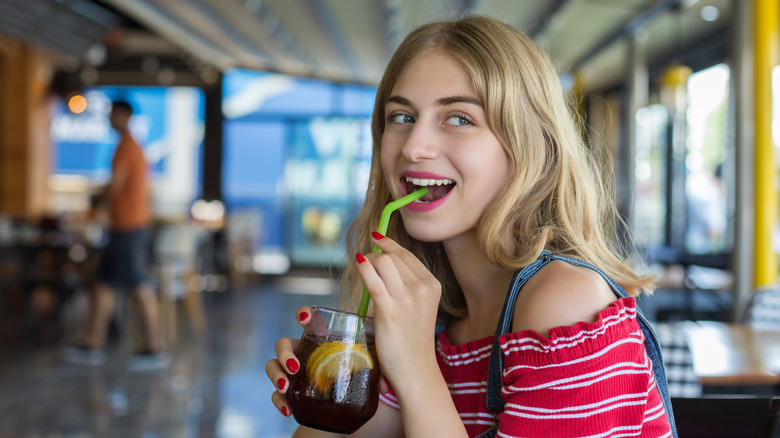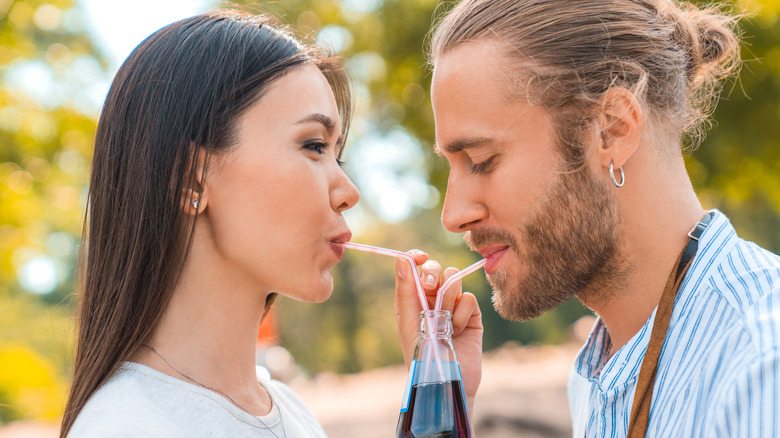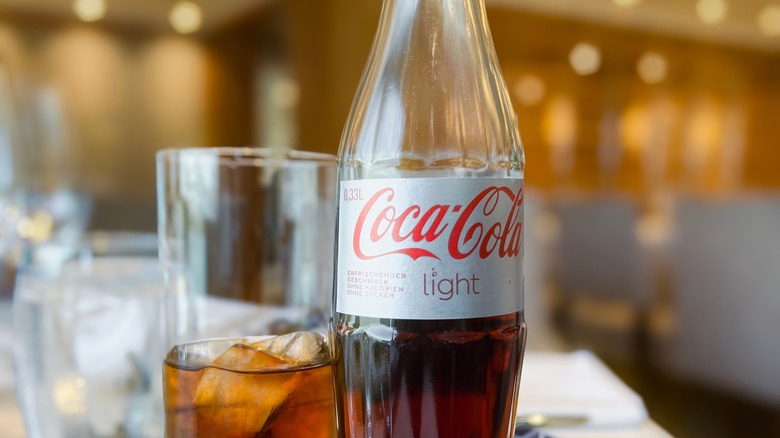Tons Of Travelers Are 'Sneaking' This Beloved Beverage Into Europe
Packing things that make you feel at ease while traveling is totally understandable. It can be rather jarring to arrive in a new place and realize you don't have access to some of your creature comforts. That's why we recommend packing some of your favorite snacks for long travel days, especially if you're food sensitive or struggle with food sensory issues. Still, it's rather shocking that a growing number of travelers are stuffing checked bags full of Diet Coke for their perfect European travel itinerary.
The buzz around traveling with the popular diet soda started when a reality TV star named Jill Zarin, best known from "The Real Housewives of New York," was filmed in a TikTok video with a suitcase full of the beverage. After being told by her cruise line that Europe doesn't sell Diet Coke, she felt compelled to bring her own. Apparently, the only thing more American than an obsession with reality television is an addiction to diet soda because the content was relatable for many Americans, who flocked to share their own Diet Coke travel stories on social media.
For some, it seems that the bubbly beverage is more than just an enjoyable drink — it's a travel essential. For others, the idea of not being able to travel without a particular soda seems utterly ridiculous. Regardless of where you stand on the issue, the topic does inspire an interesting conversation about the different ingredients used in American vs. European products.
Is Diet Coke really unavailable in Europe?
If you're a lover of Diet Coke, your most pressing question might be whether or not Diet Coke is really unavailable in Europe and if you need to add it to your general packing list. The short answer is no; there is no ban or restrictions on diet soda in any European destinations, but the formulations may be slightly different. That said, many ingredients that are commonly used in the United States aren't used in Europe for health reasons, so it's not surprising there's a little confusion about whether or not it's banned.
If you're a real die-hard Diet Coke drinker, you may find the difference in flavor off-putting. Such was the case for Zarin, who posted a follow-up TikTok in response to a comment stating that Diet Coke actually is available in Europe. "I appreciate everyone's comments, but I checked with the ship prior to leaving New York and was made very aware that they only have Coke Light and Coke Zero. So, though it looks like Diet Coke, it says "Coke Light" and it doesn't taste like Diet Coke."
Arguments unfolded in the video's comment section, with some people stating that they purchase Diet Coke, not Coke Light, all the time in parts of Europe and the United Kingdom, and others agreeing that Coke Light in Europe does not taste the same. So, what's the difference?
Global differences between Diet Coke, Coke Zero, and Coke Light
Diet Coke is available in the United Kingdom and certain parts of Europe, but it isn't easy to find in many parts of the continent. Instead, you'll be choosing between Coke Zero and Coke Light. Coke Zero is the most popular of the two throughout Europe. Keep in mind that the word "diet" doesn't have the same meaning in every language, whereas the word "light" is easier to recognize internationally, which explains the name change.
Coke Zero is sold in the United States, as well as Europe and tastes different from Diet Coke. Both drinks are calorie free and have no sugar, but Coke Zero tastes like the original Coke. Diet Coke and Coke Light are the same thing, but certain ingredients and formulations may vary slightly between countries. Some nations may use different sweeteners, so the taste isn't exactly what American consumers are expecting. It's also possible that different types of water used in production in factories around the world could alter the taste.
The Coca-Cola website states: "The basic ingredients and process used to make Coca‑Cola are the same in all countries, although people perceive taste in very different ways. It is possible for the same soft drink to vary slightly in taste due to other factors such as the temperature at which it is consumed, the foods with which it is consumed, or the conditions in which it is stored prior to consumption."


